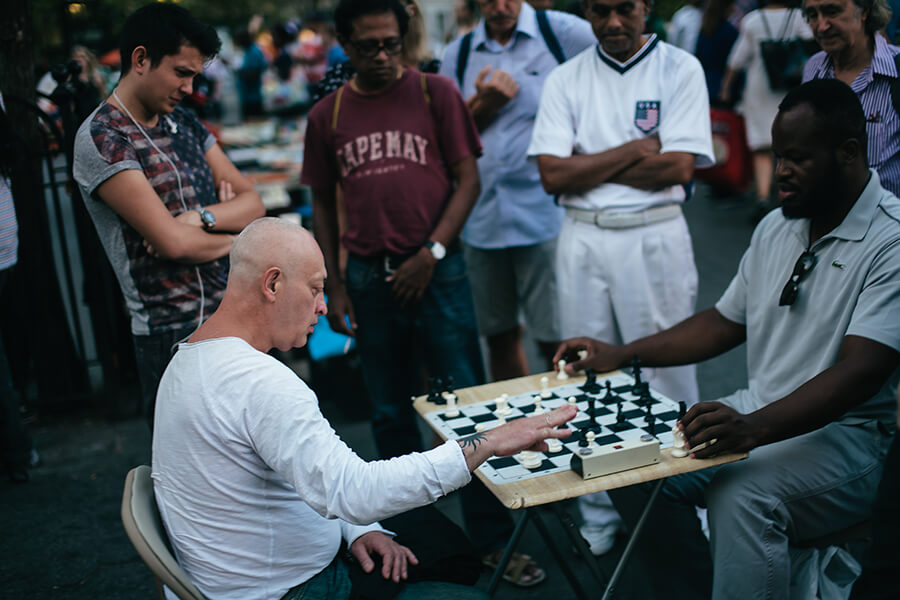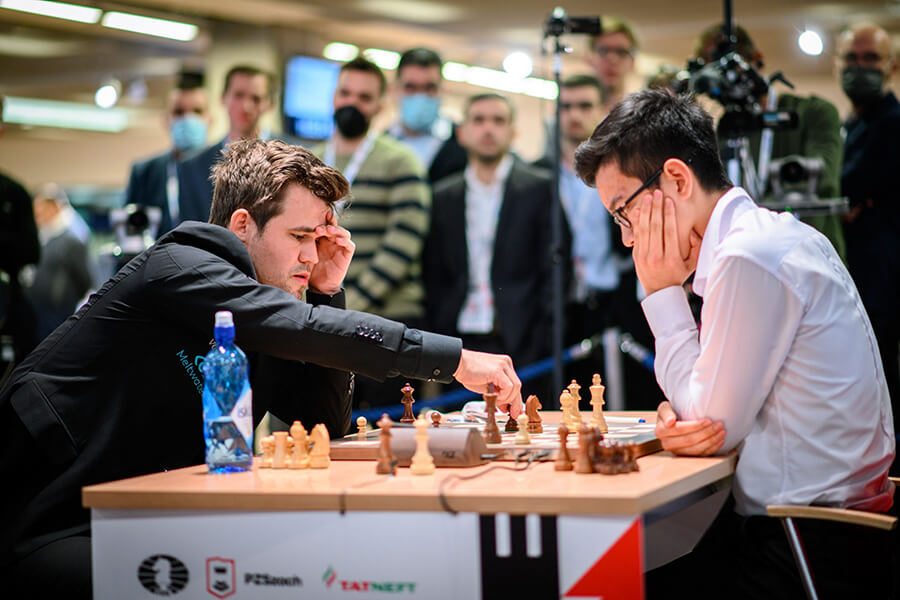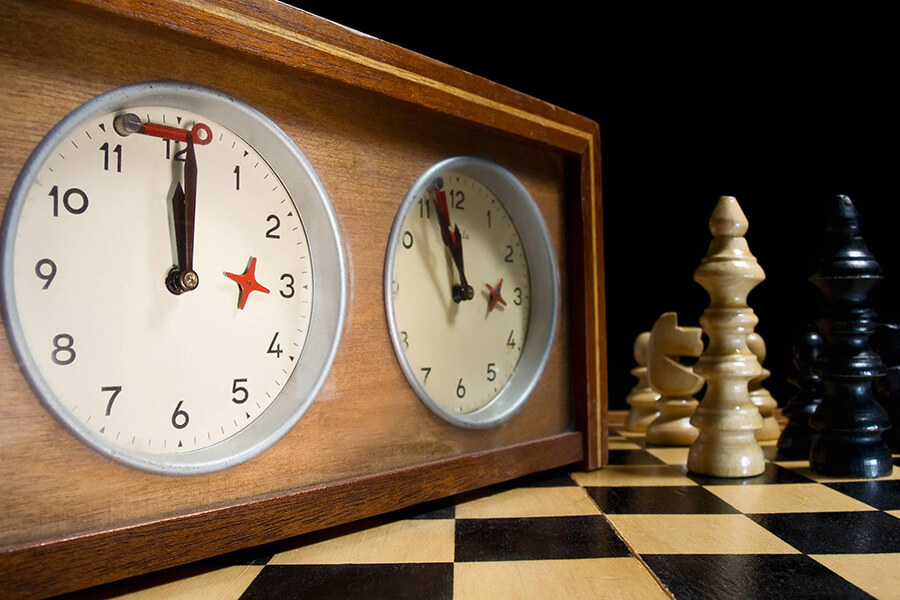Chess News, Events & Blogs
Blitz Chess | Rule And Format
Table of Contents
What Is Blitz Chess?
Blitz chess, also known as Speed chess, is a fast-paced version of chess with significantly reduced time for each player to make their moves, often a few minutes per game. It emphasizes quick decision-making, tactical play, and adds an element of excitement to the game.
Rule of Blitz Chess
Here are some general guidelines and commonly accepted rules for blitz chess:
1. Time Control: Blitz chess typically has a faster time control compared to standard chess. Common time controls include 3 minutes with a 2-second increment per move, or 5 minutes without an increment.
2. Touch-Move Rule: The touch-move rule applies in blitz chess. Once a player touches a piece, they must move it if it has a legal move. If a player touches an opponent’s piece, they must capture it if it is a legal move.
3. Illegal Moves and Checkmate: If an illegal move is made, the opponent has the right to stop the clock and claim the win. Checkmate ends the game immediately, regardless of the time remaining on the clock.
4. Time Management: Each player must manage their time efficiently. If a player’s time runs out, they lose the game. However, some variations of blitz chess may allow for “flagging,” where a player wins by exhausting their opponent’s time, even if the opponent has a winning position on the board.
5. Draw Offers: Draws can be agreed upon by mutual consent. However, in many blitz chess tournaments, draw offers are not allowed until a specific point in the game (e.g., after move 30).
It is important to note that rules may differ between different blitz chess events or platforms, so it’s advisable to familiarize yourself with the specific rules and regulations in the context you are playing.
Format of Blitz Chess

1. Time Control: Blitz chess typically employs a fast time control, where each player is given a limited amount of time to complete their moves. The most common time controls are three minutes per player for the entire game (3+0) or five minutes per player (5+0), meaning that each player has three or five minutes on their clock from the start, without any additional time increments per move.
2. Clocks: Each player has a chess clock or digital timer to track their remaining time. The clock alternates between the players, counting down the time as each move is made. When it’s a player’s turn, they must make their move and press the clock, which then starts the opponent’s timer.
3. Time Management: Efficient time management is crucial in Blitz chess. Players must make their moves quickly to avoid running out of time. If a player’s time runs out before they complete their move, they lose the game, regardless of the position on the board.
4. Touch-Move Rule: The touch-move rule applies in Blitz chess, just as it does in standard chess. If a player touches a piece, they must move it if it has a legal move. If a player touches an opponent’s piece, they must capture it if possible. Intentionally touching a piece without making a move is generally not allowed.
5. Draws and Tiebreakers: In Blitz chess, draws can occur, but the rules for achieving a draw may differ depending on the tournament or organizer. Some common rules include the “threefold repetition” (the same position occurs three times), the “50-move rule” (no pawn move or capture in 50 moves), or mutual agreement between the players. In tournaments, tiebreakers may be used to determine the winner if multiple players have the same score.
6. Tournament Formats: Blitz chess can be played in various formats, including individual games, round-robin tournaments (where each participant plays against every other participant), or Swiss system tournaments (where players are paired based on their current score).
It’s important to note that the exact rules and regulations for Blitz chess can vary depending on the tournament, organizer, or platform being used. Players should familiarize themselves with the specific rules before participating in a Blitz chess event.
Why Is Blitz Chess Much Harder?
While blitz chess can be an exciting and fast-paced form of the game, it also has some difficulties to consider:
1. Reduced Time for Strategic Thinking: The fast time control in blitz chess leaves players with limited time to think and plan their moves. This can result in rushed decisions and missed opportunities for deeper analysis and strategic thinking. The reduced time can undermine the development of long-term strategies and hinder the exploration of complex positions.
2. Increased Probability of Mistakes: The time pressure in blitz chess can lead to more mistakes and blunders. Players may overlook tactical opportunities or fail to spot opponent’s threats due to the limited time available for calculation and evaluation. This can result in a less accurate and lower-quality game compared to slower time controls.
3. Less Focus on Positional Play: Blitz chess tends to prioritize quick moves and tactical opportunities over patient positional play. Players may be more inclined to rely on intuition and tactical tricks rather than methodical and strategic decision-making. This can lead to a neglect of fundamental positional concepts, such as piece coordination, pawn structure, and long-term planning.
4. Incomplete Game Analysis: Due to the fast pace of blitz chess, players often have little time to thoroughly analyze the games afterward. This reduces the opportunity for in-depth post-game analysis and learning from mistakes. Without sufficient analysis, players may miss valuable insights and fail to identify areas for improvement.
5. Increased Reliance on Opening Memorization: In blitz chess, there is often a greater emphasis on opening knowledge and quick execution of memorized opening moves. This can result in less emphasis on understanding the underlying concepts and strategic ideas behind the openings. The game may become more focused on executing a pre-determined sequence of moves rather than exploring the position dynamically.
Who Play Blitz Chess?
Blitz chess is played by a wide range of chess enthusiasts, from casual players to professional grandmasters. It is popular among chess club members, online chess platforms, and in chess tournaments that include a blitz chess category. Both recreational players and serious competitors enjoy the fast-paced nature of blitz chess and the challenge of making quick decisions under time pressure. It is also a preferred format for exhibition matches and chess demonstrations due to its lively and engaging nature. Overall, anyone with a love for chess and a desire for fast, adrenaline-fueled gameplay can enjoy and participate in blitz chess.


